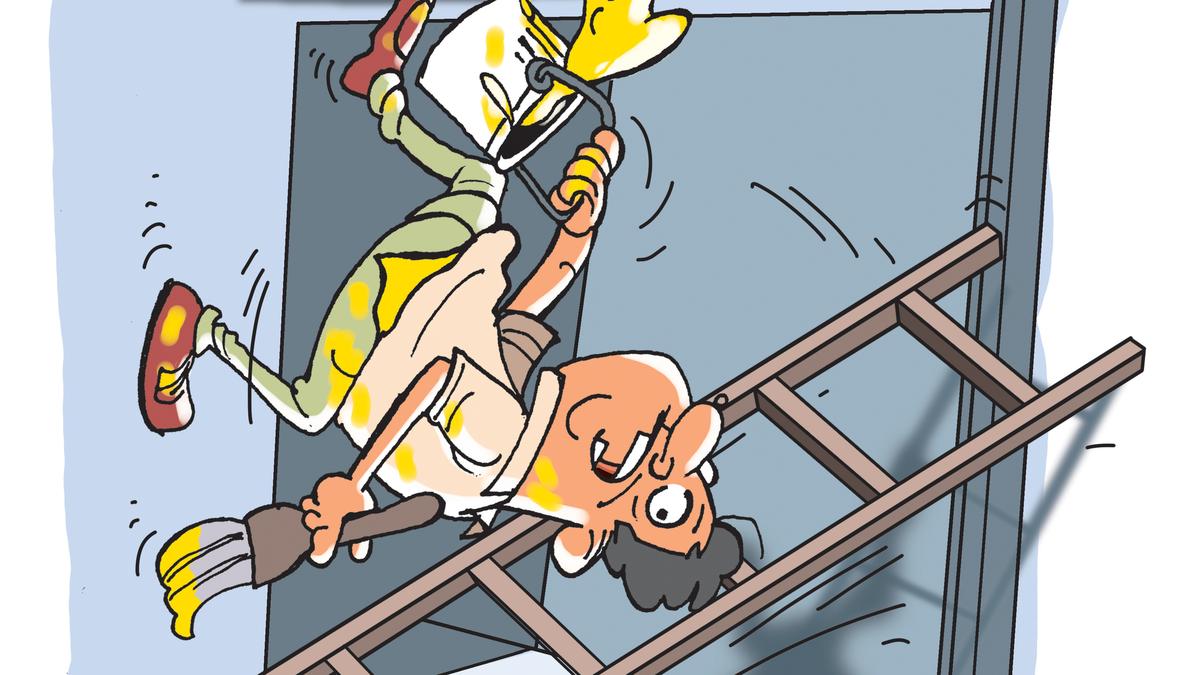The construction industry is noted to be the single largest source of carbon emissions with 40 per cent of the emissions being attributed to construction along with the utilities such as lighting, cooling, heating of the buildings, to mention a few. If this is to reach zero by 2050, important steps towards sustainable methodologies of construction and material-use should be in place. Sensitive to this scenario, Assocham GEM Karnataka Chapter decided to address the issue by making a beginning with students of architecture.
GEM, a flagship initiative of Assocham, (stands for Green and Eco-friendly Movement) comes with its own indigenous green rating for buildings. In keeping with its philosophy of promoting green buildings, GEM Karnataka Chapter will be reaching out to the architecture schools in Bengaluru to host workshops for architecture students on sustainable methodologies of construction such as Alternate Roofing methods, Rammed Earth and Stabilised mud blocks, techniques of lime plaster, Athangudi tiles, to mention a few.
Workshop on Athangudi tiles
As part of this initiative, the first workshop was held on Athangudi tiles for the students of CMR University School of Architecture, where 32 students participated and learnt to physically make the vibrant handmade tiles from Athangudi. The participating students were sensitised on the sustainable quotient of the heritage Athangudi tiles which are not fired but sundried, the technique of making and laying the tiles being passed down generations of artisans in Athangudi, a village in Karaikudi district of Tamil Nadu.
The students had a peek into the history of the tiles, the traditional way of making them which is preserved to date, the materials used, the mixing of the vibrant colours which itself is an art and finally the art of physically making them. The importance of reviving heritage and adopting greener methods of construction was further reiterated during the physical process of making the tiles, given that these tiles, unless revived, would soon exit and exist only in the record books.
Physical experience
Stressing on the need to have architecture students to physically participate in workshops dealing with sustainable methodologies, architect Leena Kumar, Chairperson, Assocham GEM Karnataka Chapter, stated, “The physical experience ensures greater involvement as well as leaning towards sustainability, once they graduate. These workshops are vitally needed to bring in a change towards green buildings and reduce our carbon footprint.”
The workshop was held in the precincts of Artha, the Athangudi tile manufacturing unit of Sri Sri Rural Development Program (SSRDP) on Kanakapura Road. Over the last two years, this heritage revival wing of SSRDP has worked to revive and restore these stunning handmade tiles to their former glory by creating awareness amongst architects and the public about their sustainable nature compared to conventional tiles.
High level of dexterity
Athangudi tiles are fully handmade, using skill and high level of experience, for, any minor errors and the deficiency in the tile is so pronounced as to make it unfit for laying. Says Harsini, tenth semester student who participated in the workshop, “The making of the tile appears so simple when the proceedings are watched but once we try to do the same, the layers of skill required in the making becomes evident, making us look with renewed respect at the work of the artisans.”
The making of each tile begins with placing a glass plate and the chosen design frame over it. Bright coloured oxides are poured into the slots very carefully, ensuring the colours do not spill into the nearby slots. “The pouring of the colours too is an art and requires skill, we noticed on trying it ourselves. And so does the sprinkling of the first layer of dry cement and sand mixture over it”, pointed out Chetan, faculty, CMRU School of Architecture.
Getting the hues right
The colourful oxides of red, yellow, blue, green along with white add to the rich vibrancy of the tiles, which when laid in an interior can totally transform the language of a space. The mixing of the colours is yet another skill, the participating students realised. “The colours have to be rubbed smoothly and continuously to remove lumps and then sieved. The longer and better the colours are mixed, the stronger and more vibrant the hues are. Even the mixing is not as simple as it seems,”commented Abdul, sixth semester student who participated in the workshop.
Eight semester student Askhay sums up the experience, “These tiles are about sustainability, the story they carry and the character they brings out, while being affordable. As they can be custom-made, these tiles fit into contemporary spaces too.”
The laying process (Box)
Once the tile is made, it is left to dry and then soaked in water for three to four days, post which it is dried in shade for a week to ten days before being ready for use. Just as the making of the tile calls for skill, the laying of the finished tiles too is an art, requiring experienced hands. The process of laying begins with a spread of wet cement and mud mixture over which a thick layer of cement milk is evenly poured. This forms the bed on which the tiles are laid.
Twenty-four hours after the tiles set, the newly laid tiles are washed with plain water and a fresh layer of cement milk is poured over it to seal the gaps between the tiles. This is followed by a layer of dry cement and colour, all of which is then wiped clean to reveal neatly finished layer of tiles. The final procedure in the laying involves sprinkling of rice husk over the tiles and left to stay for a week. The oil in the rice husk gently coats the tiles as one walks on the rice husk. The rice husk is then swept clean followed by wet mopping of the floor to reveal sheer vibrant art on the floor.







